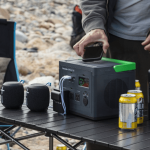Introduction
Maintaining a polished and professional exterior for commercial properties is more than just a matter of aesthetics—it’s directly tied to your organization’s reputation and overall brand image. A well-designed, inviting landscape creates an immediate, positive impression for anyone visiting your property, from customers to clients to prospective new hires. Additionally, landscape quality has been linked to employee satisfaction, as a clean and rejuvenating outdoor space can support morale and even productivity.
This is where the expertise of an experienced commercial landscaper proves invaluable. They can recommend cost-effective, sustainable, and visually pleasing solutions tailored for minimal maintenance.
By strategically selecting the right blend of plants, construction materials, and smart design elements, you can reduce the demands of ongoing upkeep, cut down on costs, and still achieve an attractive landscape that stands out. The following ideas will help guide you toward low-maintenance commercial landscaping without sacrificing style or curb appeal.
Choose Native and Drought-Tolerant Plants
Mindful plant selection is one of the easiest and most eco-friendly ways to minimize your landscaping workload. Native plants are species naturally adapted to your local environment, meaning they can thrive with the region’s rainfall, temperature range, and soil conditions. These hardy specimens are more resistant to local pests and diseases, requiring less intervention for health and survival. This translates to less watering, fertilizing, spraying, and overall trouble year after year.
Similarly, drought-tolerant plants—especially those endemic to your area—can withstand unpredictable weather or municipal watering restrictions.
Incorporate Hardscaping Elements
Hardscaping refers to a landscape’s non-living, constructed elements that add both function and visual appeal. Incorporating features like walkways, stone patios, benches, planters, and low retaining walls allows you to define outdoor spaces and amplify usability, all while reducing the area covered by high-maintenance lawn or garden beds. Hardscape areas need minimal attention—often just a periodic sweeping, power washing, or light repairs compared to mowing, trimming, or fertilizing.
Durable materials such as concrete pavers, gravel, flagstone, and decomposed granite stand up well to heavy use and harsh weather, providing long-lasting structure and sophistication for your exterior.
Implement Smart Irrigation Systems
Watering can be one of landscape maintenance’s most time-consuming and resource-heavy aspects, especially for larger commercial properties. Installing an automated, smart irrigation system eliminates manual watering and can boost efficiency and conserve natural resources. Modern irrigation systems include programmable timers and moisture sensors that adapt to weather conditions, watering only when and where needed. Drip irrigation, in particular, delivers water straight to the roots, preventing runoff and evaporation, and significantly reducing the chances of plant stress or diseases caused by overwatering.
Utilize Mulch and Ground Covers
Applying mulch around trees, shrubs, and plant beds is one of the simplest ways to save time and keep your landscape looking tidy. Mulch conserves soil moisture, suppresses weed growth, and helps regulate soil temperature, reducing the need for irrigation and manual weeding. Organic mulches—such as wood chips, bark, or pine needles—break down gradually, adding nutrients to the soil and supporting healthy plant growth.
For areas where you want year-round coverage with virtually no mowing, consider employing dense, low-growing ground covers like creeping thyme, mondo grass, or clover. These alternatives out-compete weeds, withstand moderate foot traffic, and create a lush, uniform appearance with far less effort than maintaining turf lawns.
Opt for Artificial Turf in High-Traffic Areas
Some commercial locations, such as building entrances, pathways, or recreational zones, experience so much activity that natural grass quickly becomes patchy, muddy, or worn out. In these spots, artificial turf presents a practical and visually appealing alternative. Today’s synthetic grasses look strikingly realistic, offer superior durability, and withstand foot traffic, spills, and all kinds of weather while maintaining their aesthetic appeal.
Once installed, artificial turf requires almost no ongoing care—no mowing, watering, fertilizing, pest control, or mud cleanup—making it especially attractive for busy managers who want to maximize their landscape appearance for years to come.
Design with Simplicity and Structure
A landscape’s visual order and clarity strongly influence perceptions of professionalism and care. By embracing a minimalist design approach—using clean lines, geometric patterns, and simple masses of plantings—you reduce visual clutter and simplify maintenance. With fewer, well-chosen plant species and organized beds, maintenance tasks become more predictable and easier to schedule.
It’s also helpful to group plantings according to their sunlight, moisture, and soil requirements, streamlining watering and pruning. Structured layouts, such as symmetrical borders or grid-aligned shrubs, bring a neat, intentional look to your property, reducing the likelihood of overgrowth or haphazard appearances that can develop quickly in complex designs.
Conclusion
Even for the busiest property owners, achieving a low-maintenance, beautiful commercial landscape is possible. By adopting native and drought-resistant plants, expanding hardscape features, leveraging automated irrigation technology, using mulch and ground covers, and focusing on straightforward, structured designs, you can dramatically cut ongoing labor and costs. These steps ensure a consistently appealing exterior and convey a commitment to sustainability and excellence—qualities that attract customers and enhance your business reputation.









